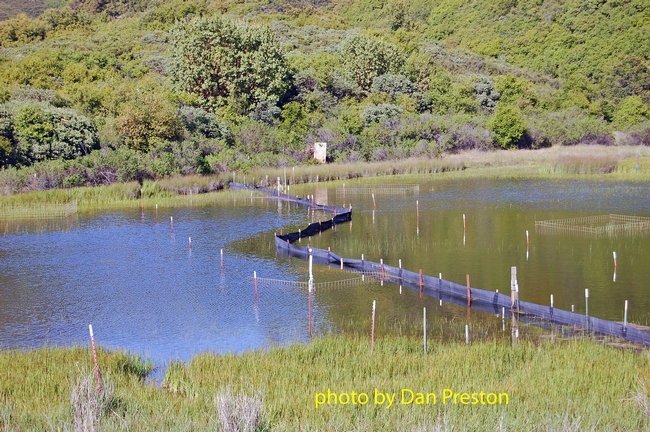To continue from yesterday's BLOG post, mosquitofish are among the most common aquatic invasive species in the Western United States. Native east of the Rocky Mountains, mosquitofish (Gambusia affinis and Gambusia Holbrooki) have been introduced to every continent except Antartica. Their widespread introduction has resulted from their use as biological control agents of larval mosquitos which transmit human pathogens. Mosquitofish are successful invaders because they are livebearing, can reach sexual maturity in only 18 days and are able to survive a wide range of environmental conditions. Our UC-HoplandREC study involves introducing mosquitofish to one-half of a barrier-divided wetland (see photo) containing native species. Our aim is to understand how they influence native wetland communities of invertebrates and amphibians. While mosquitofish may be useful for controlling mosquitos, we suspect they have unintended effects on native aquatic species, which should be considered before they are released into water bodies in northern California (and elsewhere). Author - Dan Preston
